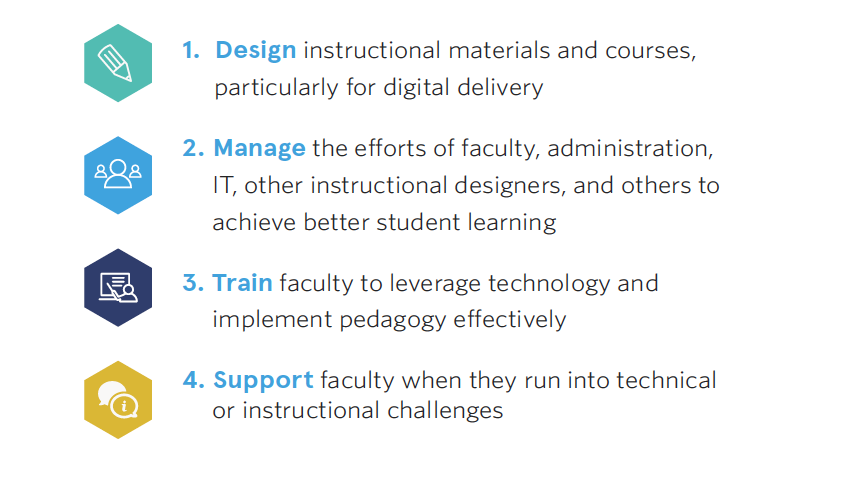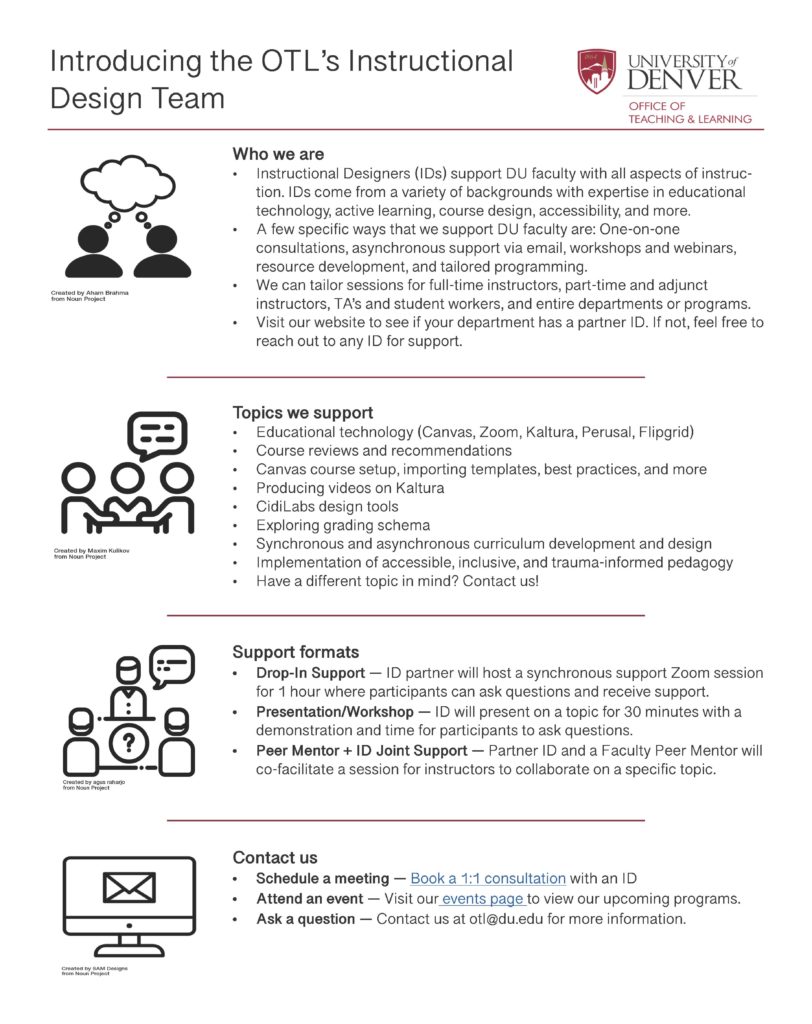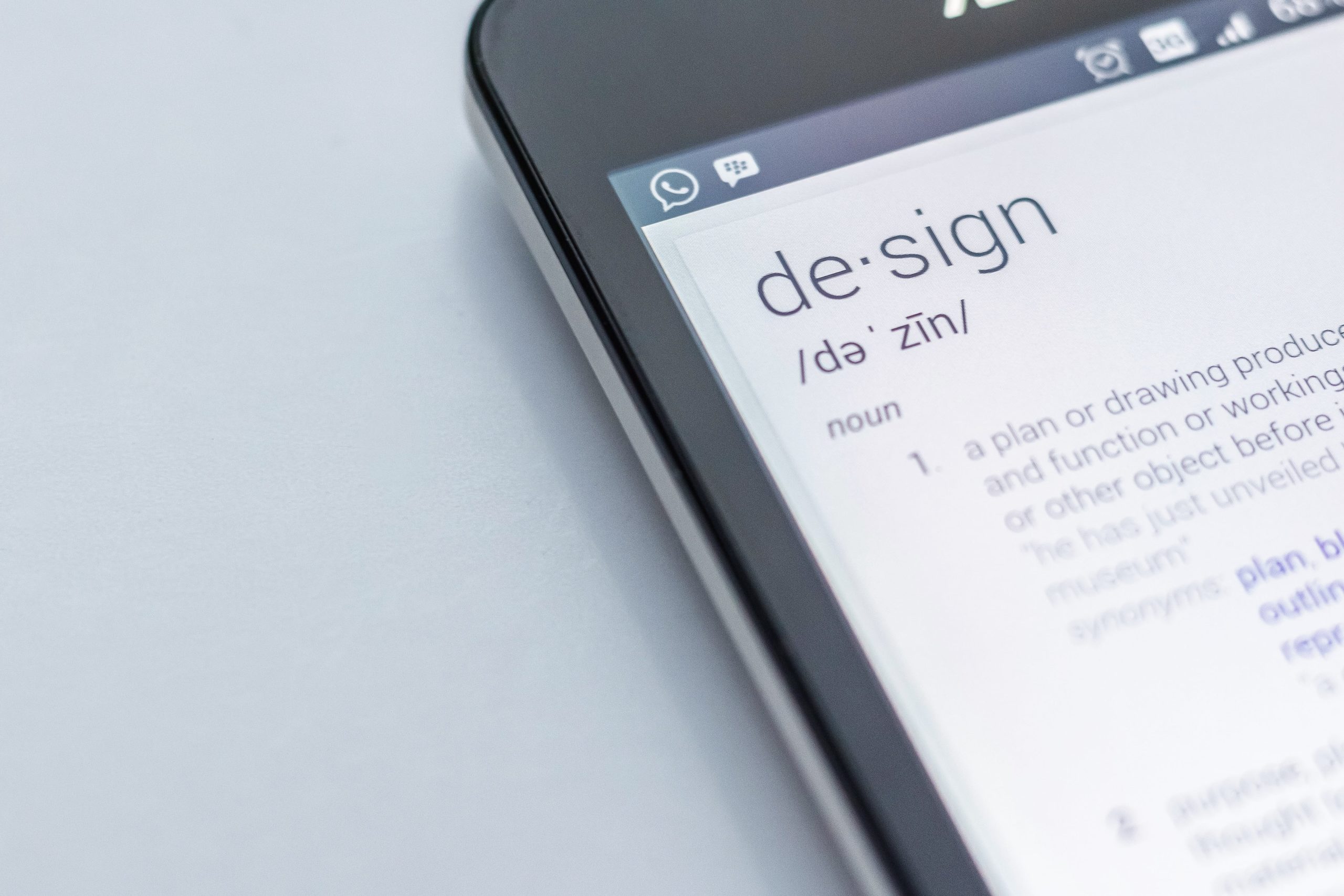By Jeff Schwartz and Vince Tango, Instructional Designers
When we tell people that we are Instructional Designers, they usually smile and say, “Great…what is that?”
It’s not a very transparent title, we admit. A teacher teaches. An engineer engineers. An Instructional Designer…designs instruction?
Well, sort of. Instructional Designers do design instruction with an emphasis on meaningful content and assessment. The work of instructional designers varies and includes a broad range of practices, with many of the tasks of falling into four categories of responsibilities: design, manage, train, and support (Intentional Futures, 2016).

Yet course design in itself encompasses a multitude of practices, including but not limited to, brainstorming assignments and classroom activities, using instructional technology like Zoom, Kaltura, or Perusall, organizing content in Canvas, creating community in classrooms of all modalities, and implementing Inclusive Teaching practices and Universal Design principles. These are all tasks that go beyond what we might think of as the “design phase” of a course. In the words of our colleague Christine Hood, Instructional Designers (or IDs) wear a lot of hats. Quinn and Darby (2021) explain the design role as follows:
Design is the work of building and creating online courses, from scaffolding instruction to crafting authentic assessments. It is the creative work of generating ideas with instructors, then pragmatically constructing the ideas so that instructors can succeed in an online environment. Design is also connected to reviewing courses for a defined measure of quality standards. Instructional design also requires designers to effectively and efficiently manage multiple projects at different levels of commitment.
We are here to collaborate with faculty on the creation and evaluation of effective instructional approaches and meaningful learning experiences. We regularly consult with instructors about new (and existing) instructional technologies, pedagogical strategies, and evaluating courses for optimal learning. Instructional designers are teachers of teachers, assisting with the framing of an instructor’s ideas for their class and understanding what is and isn’t possible (Morris, 2018). It is our role to know best practices and share evidence-based strategies that promote active learning, engagement, and enhance learning.
We’ve noticed that faculty can seem a little hesitant at first about working with instructional designers. Whether the question is big or small, we would love to help. Think of us as course- design coaches and tech-savvy cheerleaders who are available to support instructors so they can feel inspired about their teaching.
Keep in mind we do not advise faculty what to teach. Rather, our role is to share best practice with design strategies and learning technologies that enhance learning. We work with faculty on how to design a course, not what to teach. And design doesn’t end at the start of the quarter. You can benefit from collaborating with us all quarter long!
We are available to discuss topics such as:
- Preparation and logistics of course design and development, including redesigning a course for a new/different modality
- Developing learning outcomes
- Planning course syllabi
- Best practices to enhance learning experiences
- Course mapping and alignment
- Accessibility and Universal Design for Learning (UDL)
- Educational technology including but not limited to Canvas, Zoom, Kaltura, Office 365, Perusall, and CidiLabs DesignTools
- Designing courses in (or enhanced with) Canvas
- Using the OTL’s Canvas Template
- Grading – from different grading schema to using technology like Canvas’s SpeedGrader or Respondus Lockdown Browser

Schedule one-on-one time with us:
- DU Booking System – This system allows you to book a half hour time slot with an OTL expert.
References
Intentional Futures. (2016). Instructional design in higher education: A report on the role, workflow, and experience of instructional designers. https://intentionalfutures.com/static/instructional-design-in-higher-education-report-5129d9d1e6c988c254567f91f3ab0d2c.pdf
Morris, S. M. (2018, April 12). Instructional designers are teachers. Hybrid Pedagogy. http://hybridpedagogy.org/instructional-designers-are-teachers/
Quinn, J. and Darby, F. (2021). The Learner-Centered Instructional Designer: Purposes, Processes, and Practicalities of Creating Online Courses in Higher Education. Sterling, VA: Stylus Publishing, LLC.



